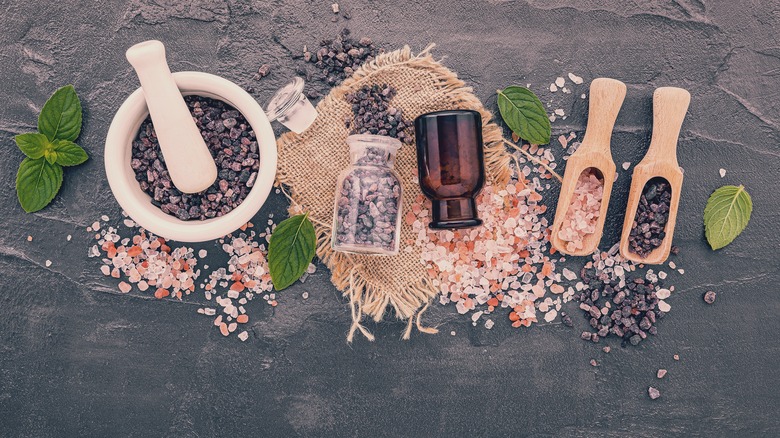The Salt Color Wolfgang Puck Never Trusts
Salt is ubiquitous when it comes to cooking in any kitchen. It's also fraught with myths, missteps, and miscalculations. Chances are you've made one or two mistakes while cooking with salt over the years. From proper storing to getting that right ratio, it often can also come down to using the wrong type of salt when cooking different dishes.
Seasoning is another story altogether. Too much and you've oversalted. Too little and you're not pulling enough of the flavors out of your red meat or not adding enough contrast to the sweetness of your baked goods. Salt plays an important role in the seasoning process for all types of preparations, and it pays to learn how much and what kind is required based on your needs.
In fact, there are at least 12 different types of salt for cooking. There are widely known ones like table and kosher, but there are also more specific kinds of salts that can really up your game like hand-harvested fleur de sel and Himalayan pink salt. Then, there are even more unique variations like black salt (known as kala namak in Indian cooking), a volcanic rock salt from the Himalayas that adds bold flavors to dishes. Clearly there are plenty of salt options, and some of these have different colors than what you're traditionally used to. But there's only one type of salt color that celebrity chef Wolfgang Puck isn't so sure about.
Judge a salt by its color
Whether sweet or savory, practically all good cooking involves salt. So it's important to get things right at the beginning before you start whipping up your next kitchen creation and can't turn back — after all, you can always add more salt, but it's tougher to take away what's already been added. A simple color check at home or in the grocery aisle could actually be a great indication of what the salt brings to the table. Just ask a high-profile celebrity chef like Wolfgang Puck. MasterClass notes that he doesn't trust salt that is too white in color, such as iodized salt. It can mean that it's highly processed, "lacks flavor," and has eliminated much of the natural minerals present in the seasoning.
An easy way to up your game in the home kitchen is to nix iodized table salt for other types of interesting, worldly, and sometimes colorful salts. And while pink salt or red salt from the volcanoes of Hawaii can be called for in the right preparations, your salt doesn't need to have a particularly unique hue: Kosher salt, with its pale color and slightly grainy texture, is the gold standard for many bakers, chefs, and recipe developers.

